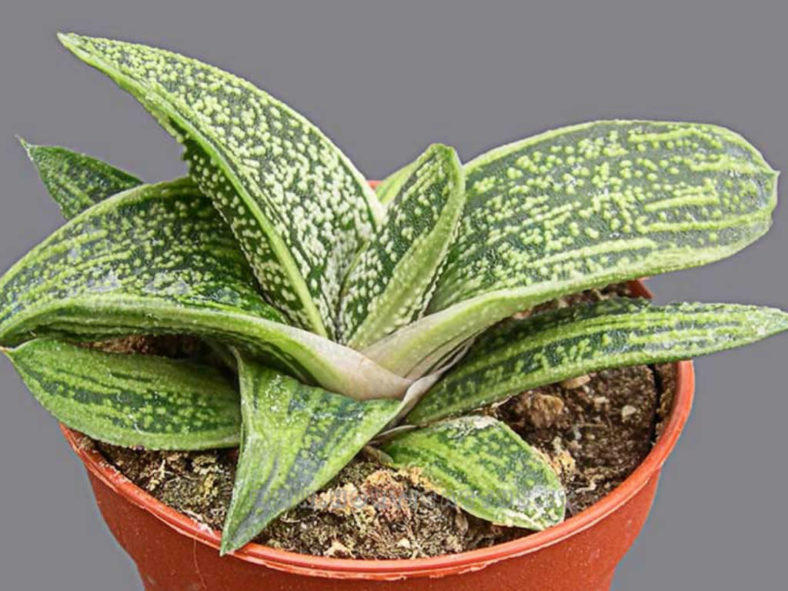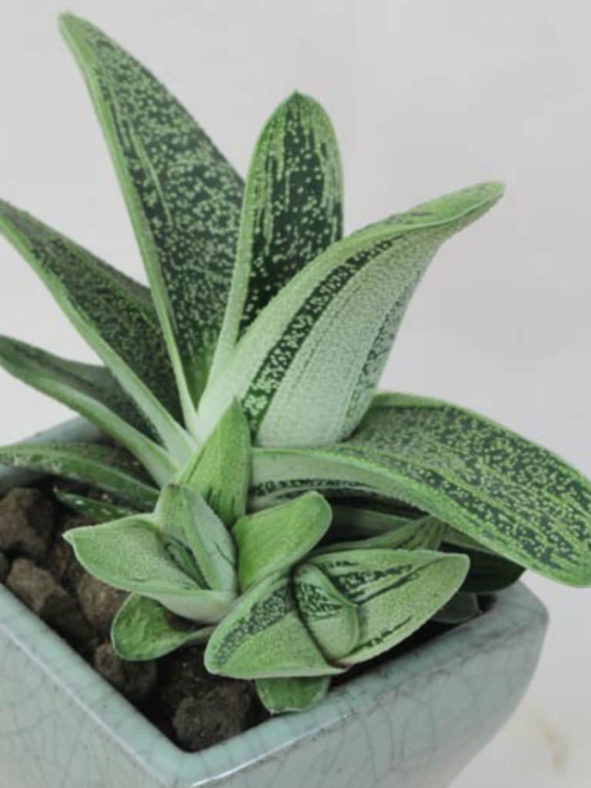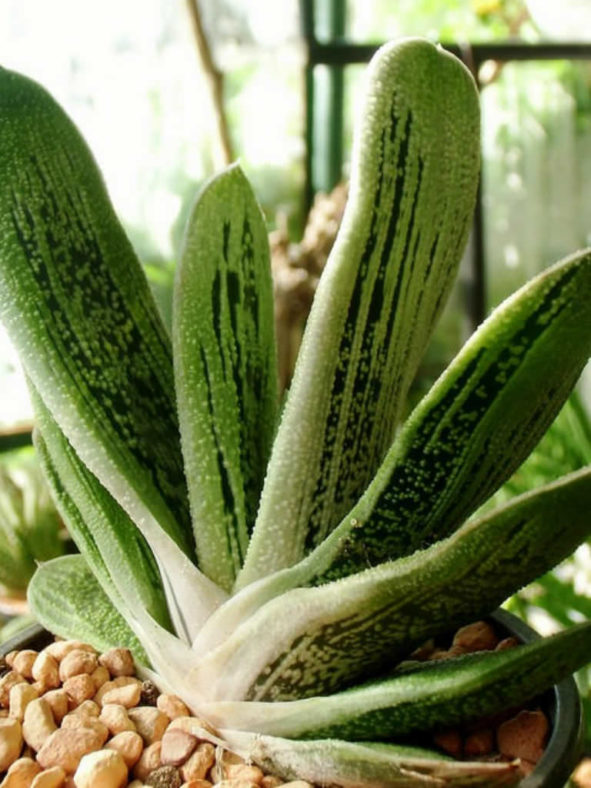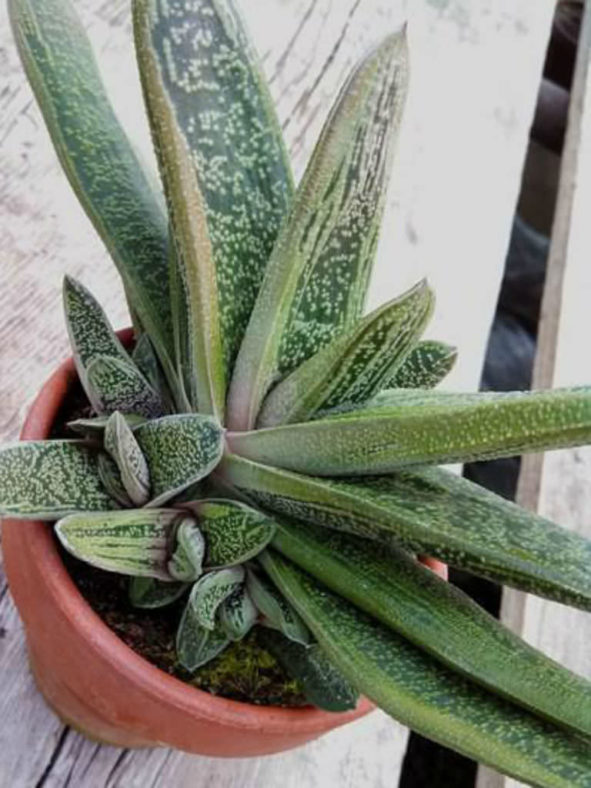Scientific Name
Gasteria 'Little Warty'
Synonym(s)
Gasteria batesiana 'Little Warty', Gasteria maculata 'Little Warty'
Scientific Classification
Family: Asphodelaceae
Subfamily: Asphodeloideae
Tribe: Aloeae
Genus: Gasteria
Origin
Gasteria 'Little Warty' is a hybrid created by the Australian hybridizer David Cumming from a cross between Gasteria batesiana and Gasteria 'Old Man Silver'.
Description
Gasteria 'Little Warty' is a small succulent that forms attractive rosettes of pointed, green leaves with raised, pale green stripes and edges and tiny white tubercles. It slowly grows and produces offsets, creating a small clump with age, which can reach a height of 8 inches (20 cm) and a width of 6 inches (15 cm). The combination of white and green colors, along with its plastic appearance, makes it look unusual.
This hybrid is quite unstable, and several slightly different clones and growing forms are available.

Hardiness
USDA hardiness zone 10a to 11b: from 30°F (-1.1°C) to 50°F (10°C).
How to Grow and Care
Gasterias are often grouped with Haworthias because the plants have similar cultural requirements. Both are attractive, small succulents that can tolerate somewhat more shade than many succulents, making them more suitable as houseplants.
These succulents are susceptible to fungal infections, which usually appear as black spots on the leaves. These result from too much humidity or water on the leaves, but they should not spread too quickly. They have a natural defense mechanism against such fungal attacks: attack the invading organism and seal off the wounded spot. Generally, any place where Haworthia and Aloe thrive will be hospitable to a Gasteria.
Gasterias are small, shallow-rooted, and relatively slow-growing. Therefore, they are often grown in small clusters in wide, shallow dishes. Over time, clusters will naturally enlarge as the mother plant sends off small plantlets.
See more at How to Grow and Care for Gasteria.
Links
- Back to genus Gasteria
- Succupedia: Browse succulents by Scientific Name, Common Name, Genus, Family, USDA Hardiness Zone, Origin, or cacti by Genus
Photo Gallery
Click on a photo to see a larger version.


